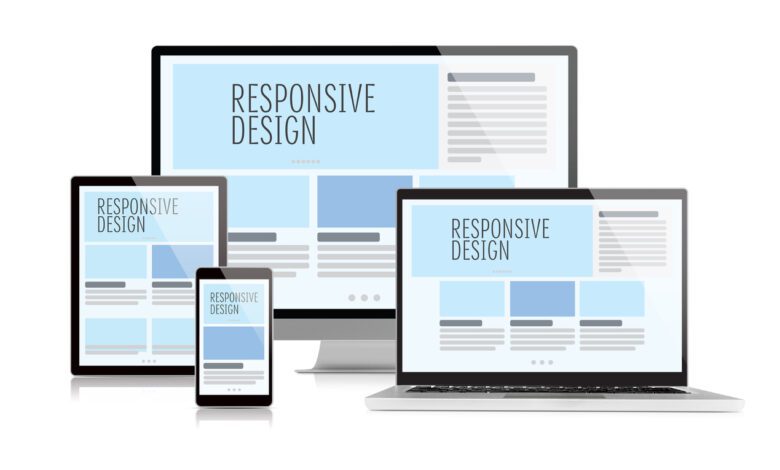What is responsive web design, and why is it important?
Responsive Web Design

Understanding the Basics of Responsive Web Design
The world has gone mobile, and web design has had to evolve to keep up with this shift. This involves the creation of websites adaptable to a variety of screens. In this sense, responsive web design is not just a trend, but an essential approach. It allows for optimal viewing and interaction experience, making readability and navigation easier across a wide range of devices. From wider screens like desktop computers and laptops to smaller ones such as smartphones and tablets, responsive web design ensures website compatibility.
Key Elements of Responsive Web Design
Several integral components come into play when developing a responsive web design. These include fluid grid layouts, flexible images, and media queries. Fluid grids allow for page element sizing to be in relative units like percentages, rather than absolute units like pixels. Flexible images resolve the challenge of displaying images in an adaptable way without distortion. Meanwhile, media queries permit the application of different CSS style rules for different device characteristics, accommodating variations in screen sizes.
The Importance and Benefits of Responsive Web Design
In today’s digital era, having a responsive web design is more than a luxury—it’s a necessity. The most significant benefit of responsive design is its ability to offer a superior user experience. Regardless of the device being used, users enjoy easy reading and navigation. Additionally, Google recommends and ranks responsive web design higher in local search results, making it important for SEO. It is also cost-effective, as you maintain a single website to cater to all devices instead of separate ones.
Challenges and Solutions in Applying Responsive Web Design
Despite the immense benefits, integrating responsive web design may present certain challenges. Foremost among these is the time and labor associated with its development compared to a standard website. However, the long-term cost-effectiveness and SEO benefits outweigh these challenges. The complexity of media handling can also be a pain point for designers. Yet solutions like CSS media queries and other evolving tools are increasingly making it simpler to incorporate smart media handling.
Future Trends: The Increasing Significance of Responsive Web Design
As technology continues to evolve, and smart devices proliferate, the importance of responsive web design increasingly comes to the fore. Future trends indicate a movement towards even more flexible and adaptable interfaces. Virtual reality, artificial intelligence, and voice user interface are expected to shape the future of responsive web design, making it an indispensable tool in the repertoire of every web developer, designer, and website owner.nderstanding the Basics of Responsive Web Design
The world has gone mobile, and web design has had to evolve to keep up with this shift. This involves the creation of websites adaptable to a variety of screens. In this sense, responsive web design is not just a trend, but an essential approach. It allows for optimal viewing and interaction experience, making readability and navigation easier across a wide range of devices. From wider screens like desktop computers and laptops to smaller ones such as smartphones and tablets, responsive web design ensures website compatibility.
Key Elements of Responsive Web Design
Several integral components come into play when developing a responsive web design. These include fluid grid layouts, flexible images, and media queries. Fluid grids allow for page element sizing to be in relative units like percentages, rather than absolute units like pixels. Flexible images resolve the challenge of displaying images in an adaptable way without distortion. Meanwhile, media queries permit the application of different CSS style rules for different device characteristics, accommodating variations in screen sizes.
The Importance and Benefits of Responsive Web Design
In today’s digital era, having a responsive web design is more than a luxury—it’s a necessity. The most significant benefit of responsive design is its ability to offer a superior user experience. Regardless of the device being used, users enjoy easy reading and navigation. Additionally, Google recommends and ranks responsive web design higher in local search results, making it important for SEO. It is also cost-effective, as you maintain a single website to cater to all devices instead of separate ones.
Challenges and Solutions in Applying Responsive Web Design
Despite the immense benefits, integrating responsive web design may present certain challenges. Foremost among these is the time and labor associated with its development compared to a standard website. However, the long-term cost-effectiveness and SEO benefits outweigh these challenges. The complexity of media handling can also be a pain point for designers. Yet solutions like CSS media queries and other evolving tools are increasingly making it simpler to incorporate smart media handling.
Future Trends: The Increasing Significance of Responsive Web Design
As technology continues to evolve, and smart devices proliferate, the importance of responsive web design increasingly comes to the fore. Future trends indicate a movement towards even more flexible and adaptable interfaces. Virtual reality, artificial intelligence, and voice user interface are expected to shape the future of responsive web design, making it an indispensable tool in the repertoire of every web developer, designer, and website owner.





